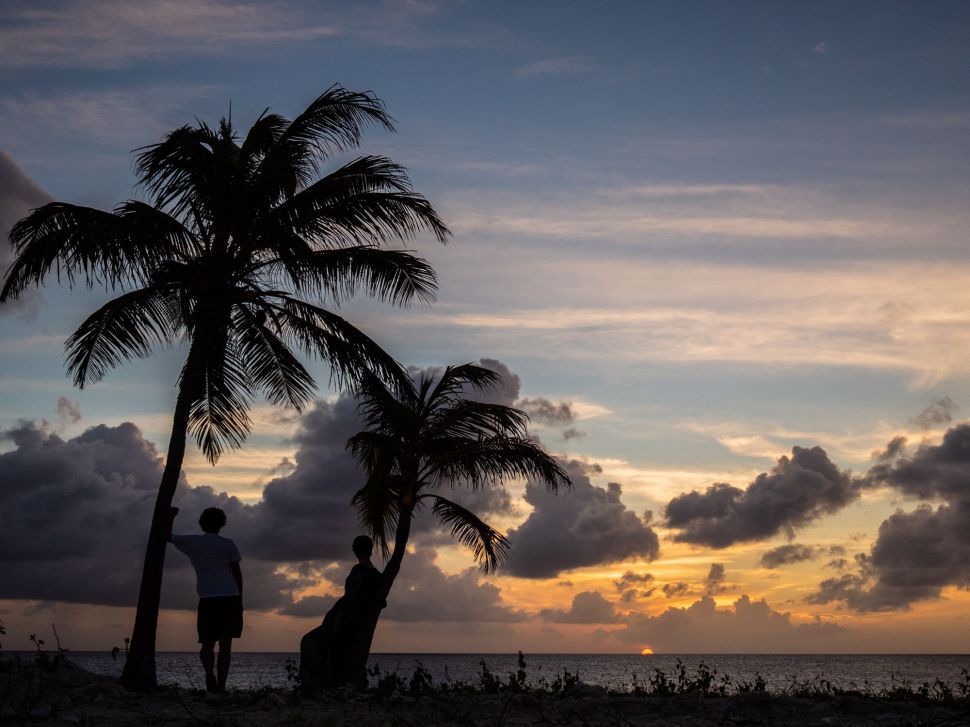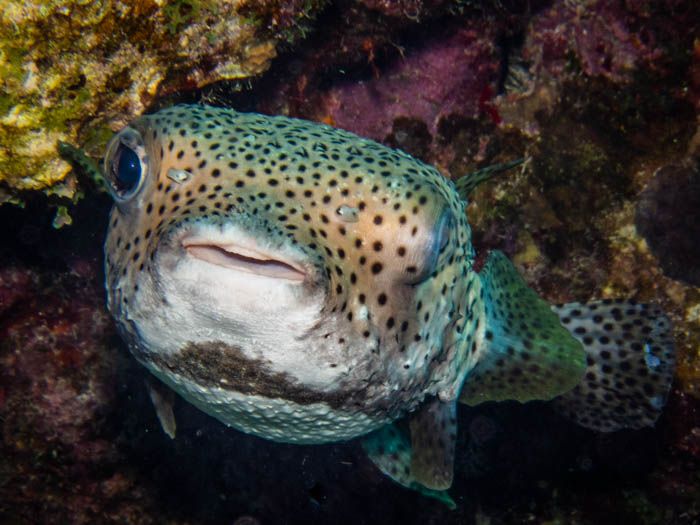Good Air
For dinner, we ate a bag of chips and chugged a bottle of pineapple juice at the airport while waiting for our Airbnb host. Finally, we had arrived in the Caribbean island of Bonaire! Traveling from Bogotá, Colombia to the midpoint island of Curaçao was stress-free enough, but we narrowly caught our flight from Curaçao to Bonaire thanks to a timezone mishap. From the chaos of the last few hours, Colombia already felt distant in our minds. While purchasing our “meal”, I felt somewhat confused rambling in English and using US dollars as I chose a well-balanced selection for us to eat. I guess indulging in Caribbean cuisine will have to wait until later. Our Airbnb host picked us up from the airport, and we drove the dark island streets back to his home. We had a private room in a shared house. I think there were three other people living in the same house. This place was the most economical housing we could find for our time on the island, though living with a few dudes, some of who preferred to walk around in only underwear in the Caribbean heat, bought Lane and I back to not-so-fond college roommate memories.
After collapsing on the bed in our air-conditioned room, we breathed a sigh of relief we were finally here and ready to dive, dive, dive!
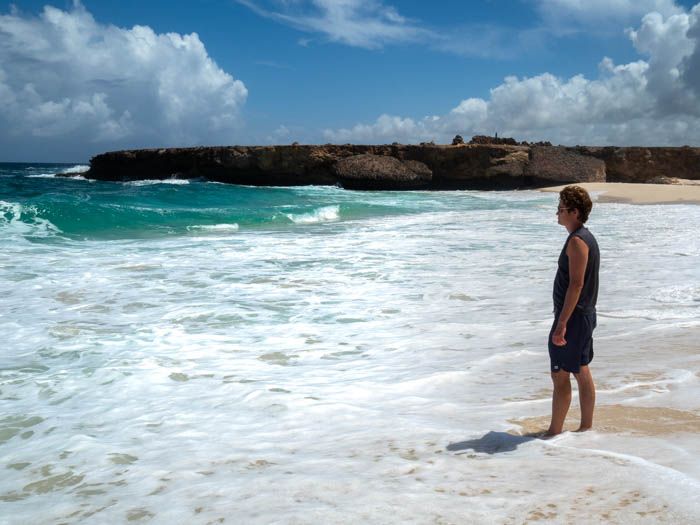
When I was about five or six years old, I remember eating my dinner in the living room enthralled by a PBS documentary. The show followed scuba divers on some under the sea adventure. They kicked fins past incredible scenery and otherworldly creatures. I excitedly asked my parents what these super cool people were doing. My mother informed me they were scuba diving, and if I ate my green beans to get stronger, maybe I could do it one day too. That “one day” turned out to be a little more than ten years later, and I’ve been hooked ever since. I learned to dive in Texas, which may not present the most amazing scenery, but it provided me the practice to become a confident diver. I’ve spent enough time in dark, muddy waters learning how to handle myself, so when I get the opportunity to dive in pristine, blue water, I am ready to go!
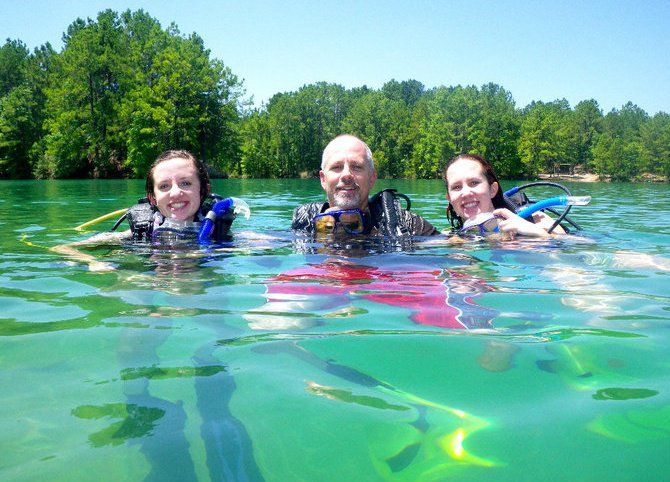
Our first morning, we hopped in our Chinese manufactured, manual-transmission rental truck and began navigating the seemingly endless roundabouts on the island on Bonaire. There are no stoplights on the island, only roundabouts. We pulled into the recommended grocery store to buy some snacks for the day. By far, our favorite purchases—which we would make repeatedly throughout the week—was a stack of delicious Dutch stroopwafels and the best coconut water ever to grace this green earth. The coconut water was 3 for $1.50, and we drank our weight in coconut water while on the island.
We arrived at our dive shop, ready for our refresher course. Our instructor, Kylie, hailed from Houston and had spent a few years teaching in the very same water where I learned to dive. We decided it made sense for Lane to take a course about diving with Nitrox that day so we would match in qualifications. We spent a few hours learning about Nitrox—air with a different ratio mixture of oxygen and nitrogen—to allow us to dive safely with less surface time in between dives. After some good ol’ fashioned learning, we parted for a lunch break, greatly anticipating our first dive of the afternoon.
We suited up in our rental gear at the dive shop and watched towards the beach. Yes, just walked from the dive shop! This is the great thing about Bonaire: there are roughly sixty dive sites along the island you can access with your truck and simply walk into the water. No boat required! This was absolutely amazing. We could dive all week on our own schedule, untethered to the whims of a dive company.
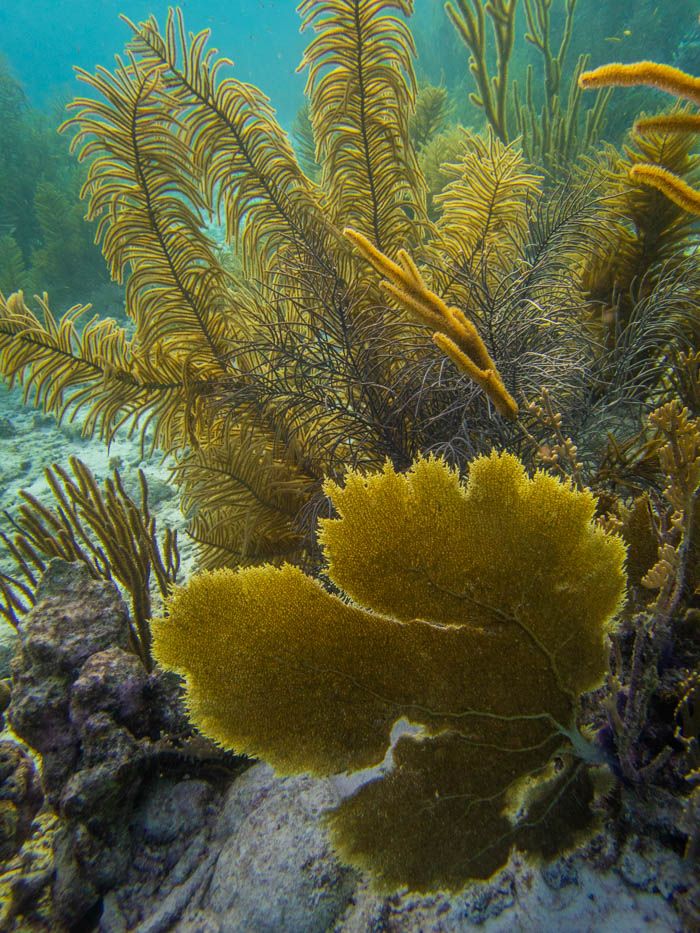
We practiced a few important safety skills in the water, and I could feel my confidence and excitement returning with full force. We descended, following Kylie all around the reef, trying to process the immense amount of life in front of us. After surfacing an hour later, we quickly decided we needed to complete one more dive before the sun went down. Kylie suggested a few good dives sites close to our Airbnb, so we loaded the truck with all our equipment and drove south.
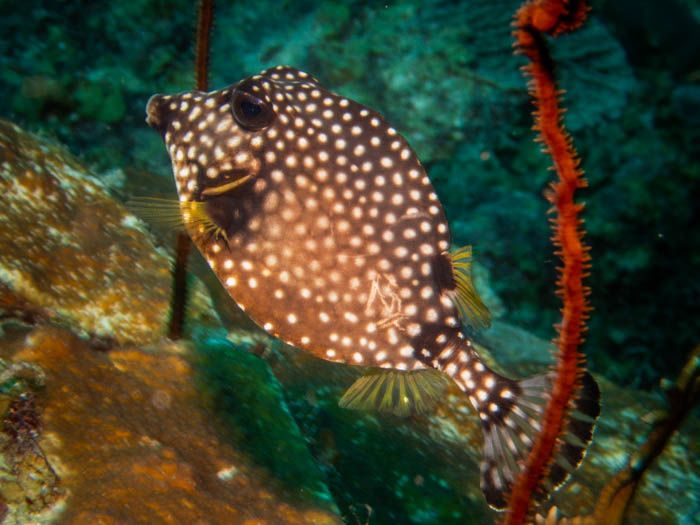
Honestly, I felt somewhat apprehensive about this next dive. It was to be our first time diving without anyone else but ourselves. We would be on the island for over a week, so I wanted this to go well. And it did! With another beautiful section of the reef explored, we surfaced just as the sun was dipping below the horizon. Happy and content with our first day in Bonaire, we rested easy, ready for the next day under the water.
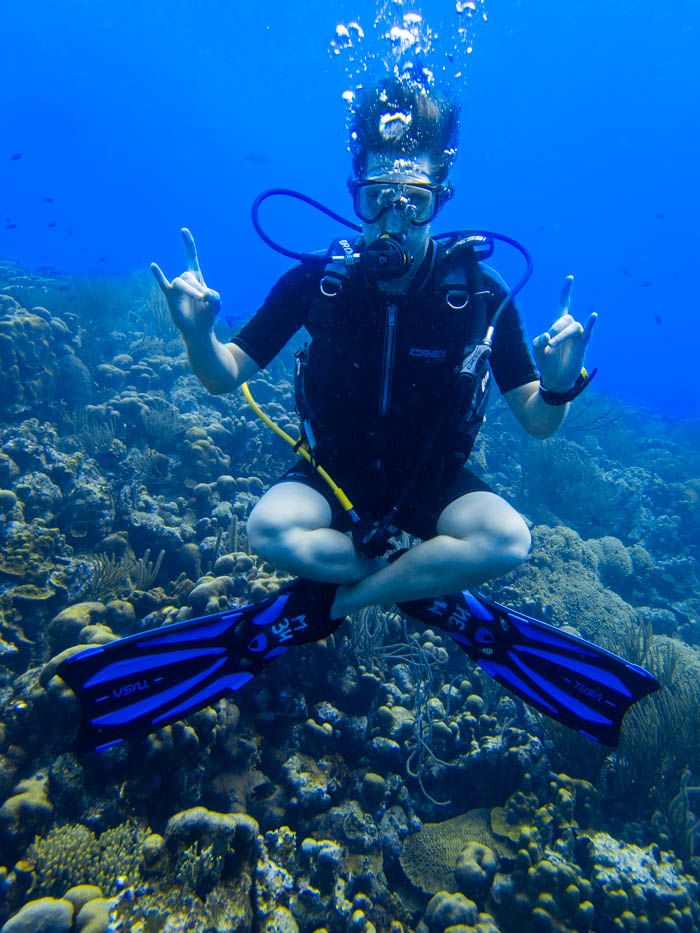
Scuba diving is difficult to describe. It’s beautiful and amazing and doesn’t translate well to other experiences I’ve had. Lane teases me that scuba diving is “underwater bird watching”, and well, there is some truth to that. This joke was reinforced by the countless retirees we dived with throughout the week, each excited to talk about what fish or sea creature they saw. But, it’s so much more than that. At the risk of sounding too obnoxious about scuba diving, I will be brief.
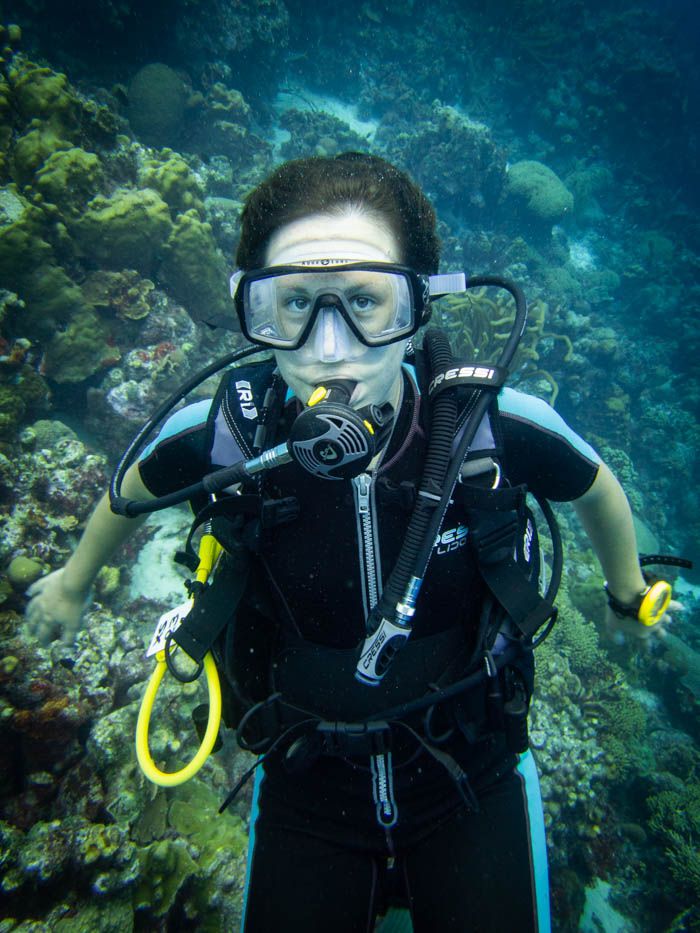
It was music to my ears as we surface swam out to a pier dive, and Lane yelled “TURTLES!!!” before descending below the surface. We would spend the better part of half an hour keeping our distance and watching sea turtles graze and play with one another, sometimes gathering speed and landing on an unexpecting friend. Earlier, we had been stopped in our tracks by a family of caribbean squid, seemingly sizing us up as we did the same to them. We swam alongside schools of fish that formed an underwater river, stretching as far as you can see. This was especially beautiful around sunset, as the water above us turned a golden hue and the fish formed an image of the milky way.
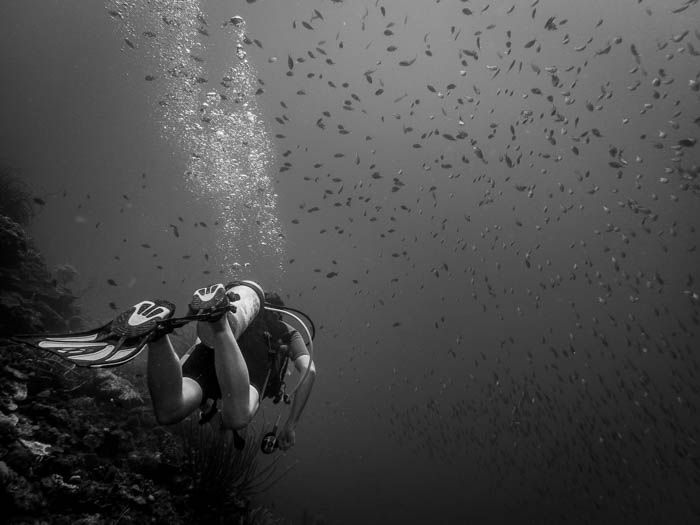
Stopping in front of coral for a few minutes always illuminates the vast array of miniature life living in the crooks and crevices of each structure. We spotted eels on nearly every dive. Small, bright yellow eels hid beneath the colorful coral, while giant moray eels peeked out of holes or swam barreling past us to find a new hole. We hovered above the biggest lobster we’ve ever seen scampering along the reef. We swam deep to 100 ft or more.
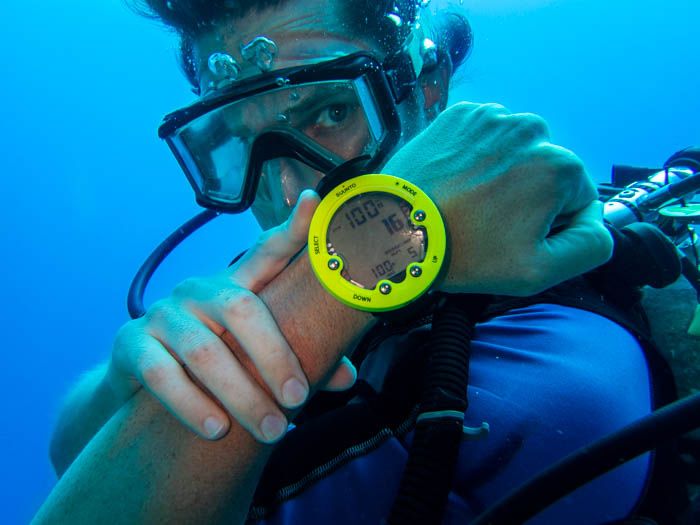
Sometimes we’d reach a sandy floor at the bottom, other times we only make a dent in a tall reef wall. One of our favorite dives was to a sunken cargo ship used for drug smuggling, now covered with life and mystery.
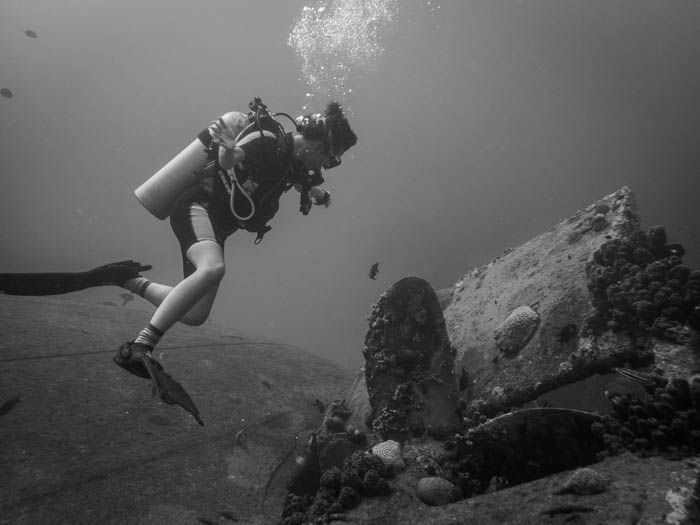
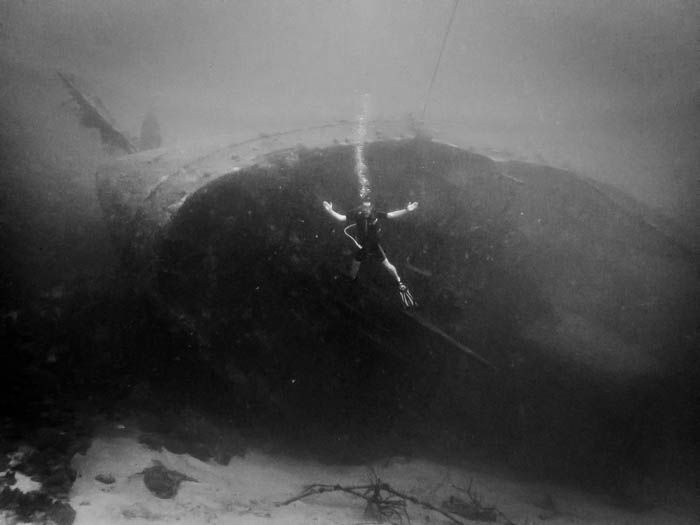
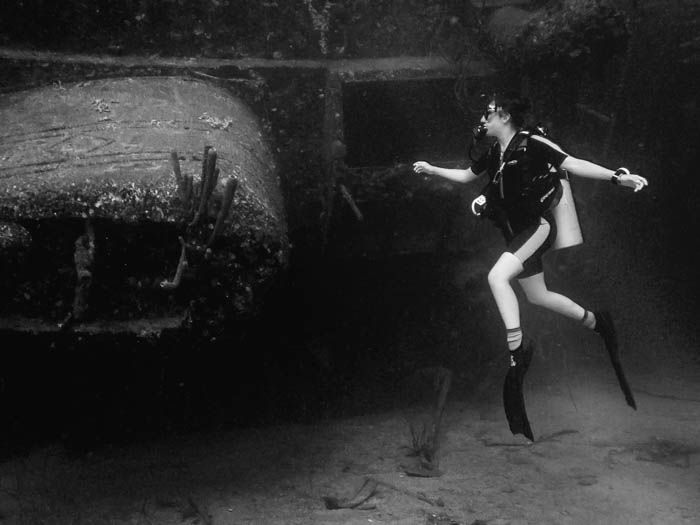
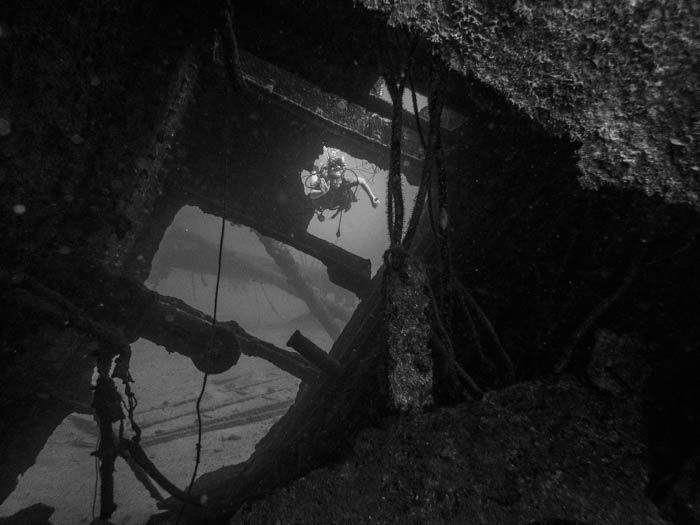
Although we are always together, it’s also time to yourself. Underwater communication is, well, difficult at best. So you observe, you swim, you think, and you enjoy the peace of the ocean.
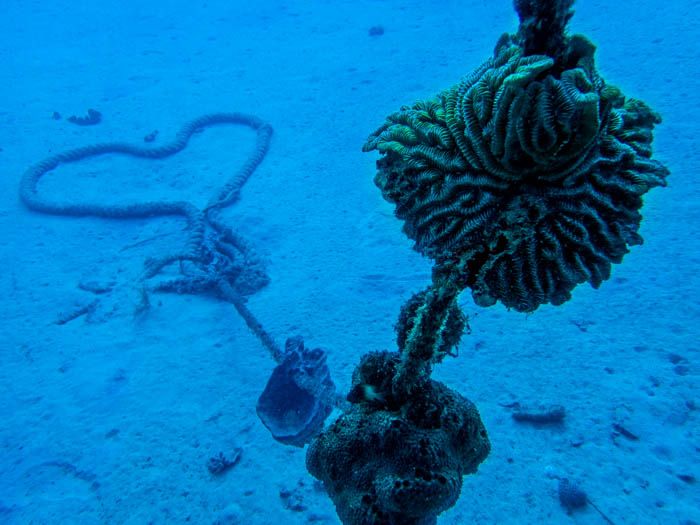
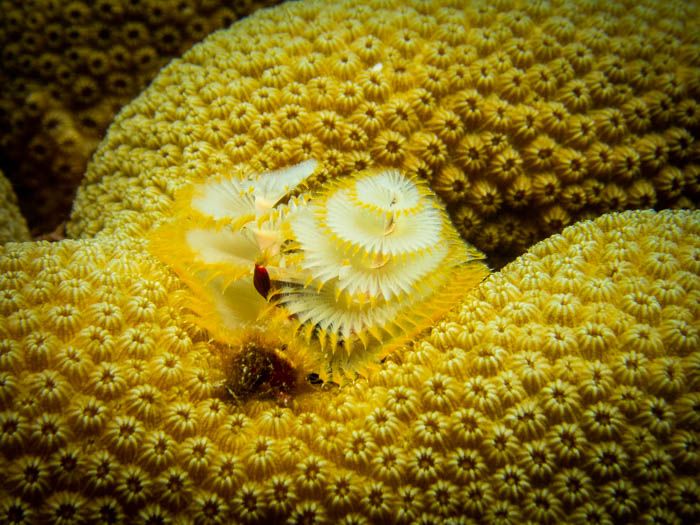
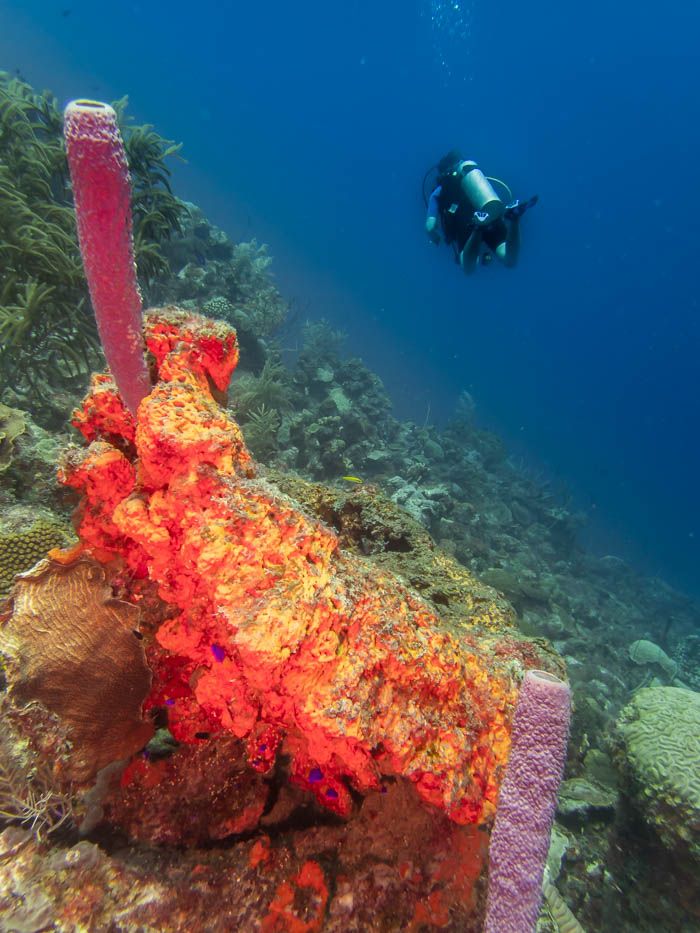
After more than 20 hours under the ocean in a week, we finally returned on dive gear and set our sites on seeing more of the land part of the island. The northern section is a huge national park established back in the 60s and predates most environmental protections in the Caribbean. The park is vast and the road is rough. The journey provides numerous opportunities to park the truck and walk around admiring the rugged northern coastlines, vastly different than the conditions where we dove. The coast is scattered with a few lighthouses once used to save lives from the very reefs we so enjoyed. Wild donkeys and goats dart across the road through a forest of cactus. A few lakes in the region are also home to families of flamingos!

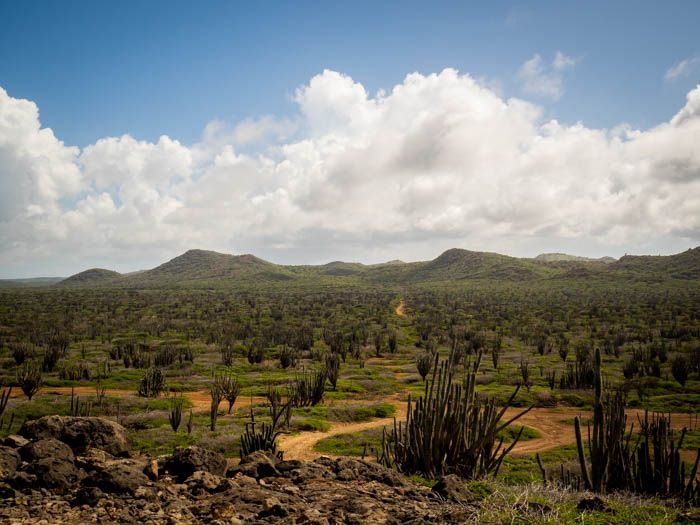
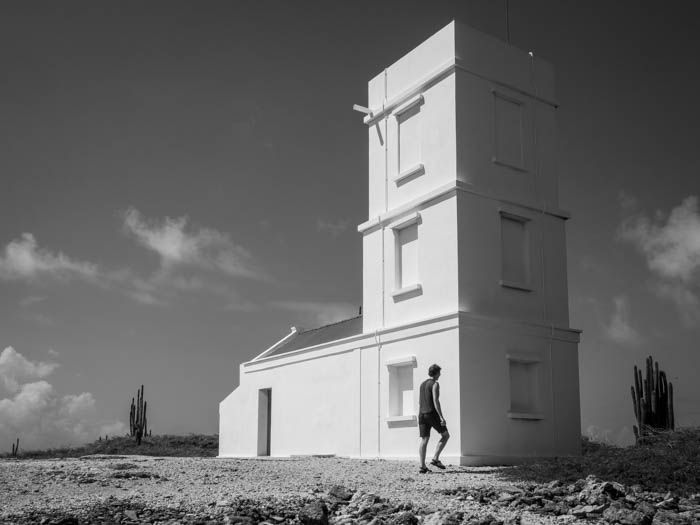
Returning to the familiar southern half of the island, we drove past the mountains of salt (still a major export of Bonaire) building up on salt pan that stretches for miles.

No matter how memorizing the landscape may be, the remnants of the Caribbean’s dark history is never far from the surface. Whether it be in the museum in the national park or along the main coastal roads, reminders of slavery in Caribbean are everywhere. The opportunity to travel through countries and learn about their history from them with their own cultural lens continues to be a powerful and leveling experience.
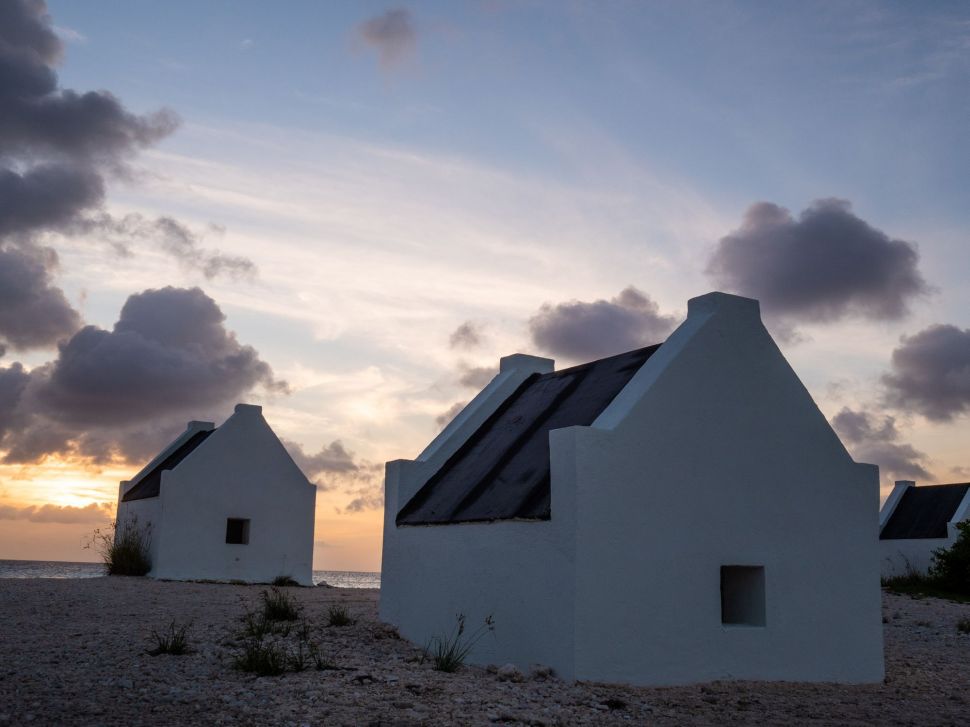
Next, we boarded a small plane to return to Curaçao to spend a few days on the island we had only briefly visited. Curaçao, also a former Dutch colony but now an independent country (but still part of the the kingdom of the Netherlands? It’s confusing) has had a long, deeply intertwined history with the colonization and independence of the Americas.
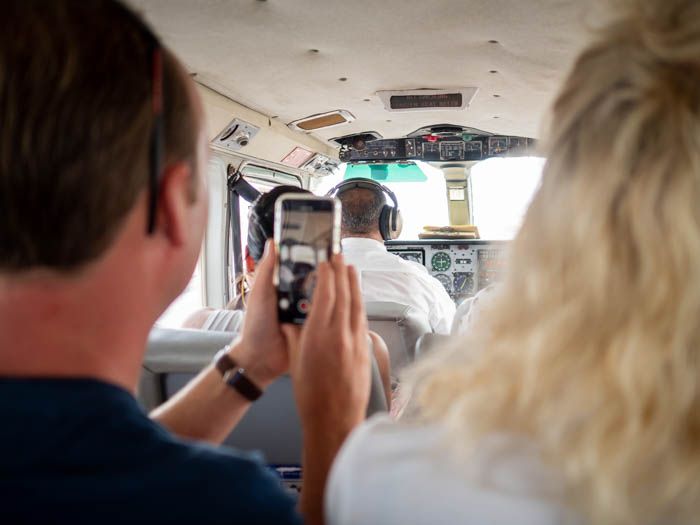
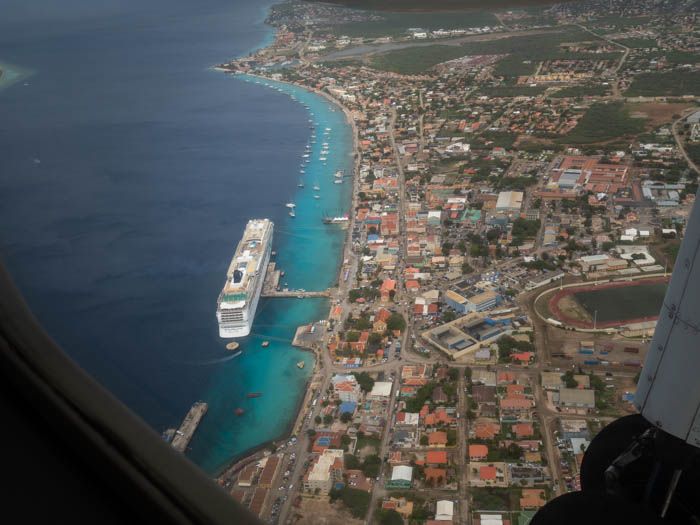
We toured the oldest continuously active synagogue in the Americas in Curaçao’s historical center. We walked across the famous bridges on bikes and along picturesque Dutch canal houses. On our way to the beach, we passed a few women beating on drums under a gazebo, perhaps practicing for an upcoming performance. We spent a whole day floating in the waters of a public beach as children ran laughing along the shore and their parents barbequed chicken on the beach.
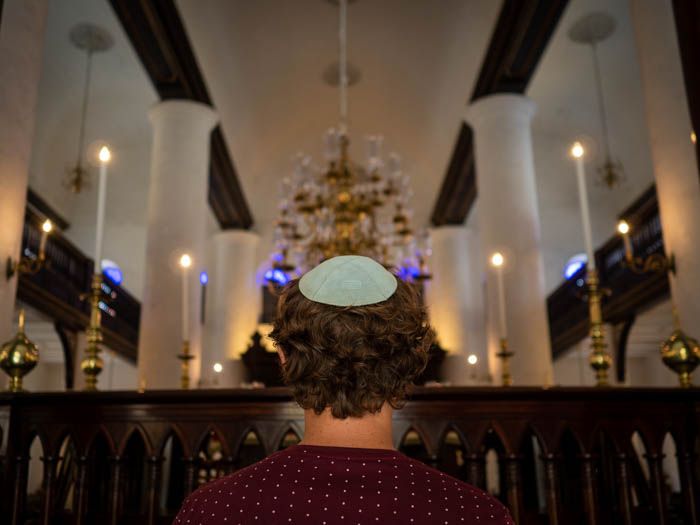
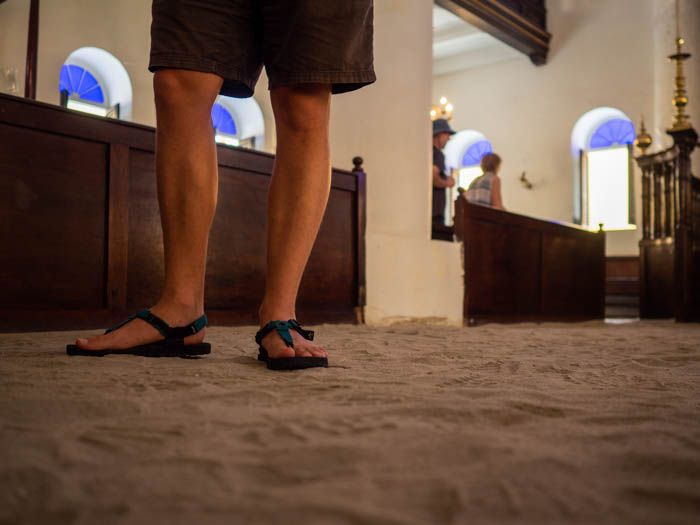
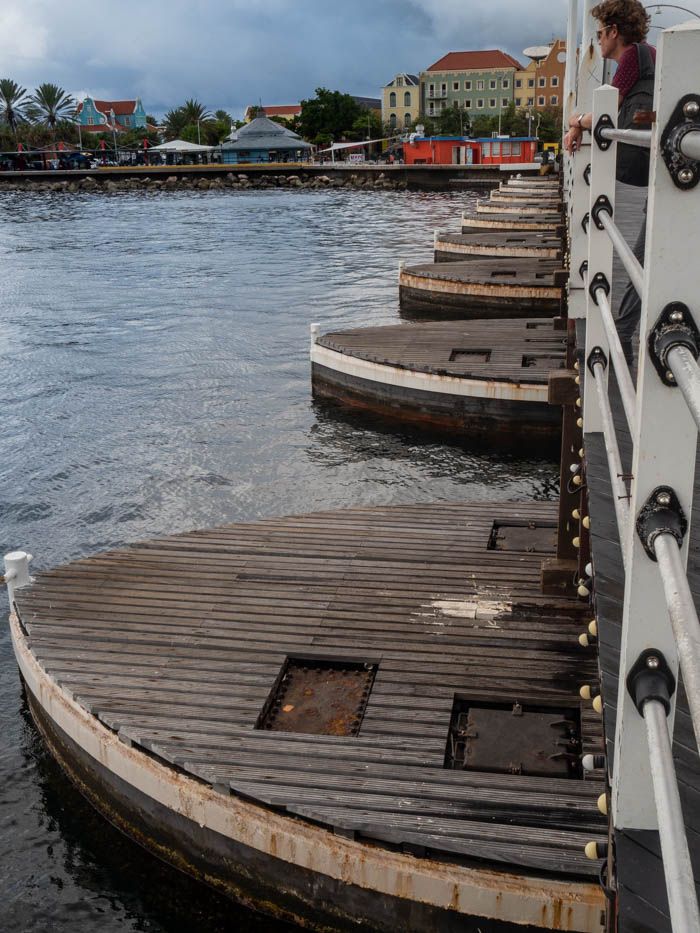
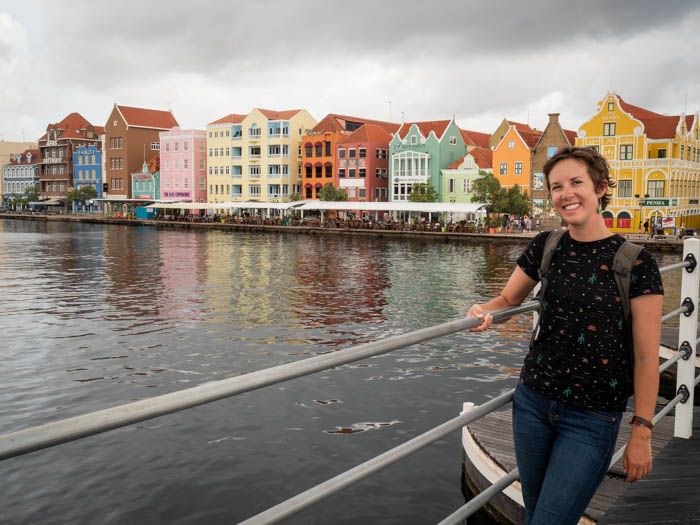
For dinner on our last night, we parked our bikes outside of a restaurant masquerading as a house. One of Lane’s friends, born in Curaçao, recommended the place when we asked where we should eat. The owner was extremely friendly, ushering onto the back-deck with a view of fishing boats still bringing in their catch. A family laughed heartily eating dinner next door. The teenage son absentmindedly tossed fishing line, sans pole, into the water as he chatted with visitors. I watched a school of minnows swim in circles beneath our feet. The cook brought us a heaping platter of various tropical fish to share for dinner. We devoured the entirety of the food before us, happy with the meal. The owner laughed when Lane handed him wet dollar bills as payment, soaked from the day we had spent at the beach. We rode our bikes through twilight as soft rain began to fall.
An afternoon flight the following day would take us back to Bogotá, Colombia. After a few days in the nation’s capital, we would continue south in our South American adventure.
